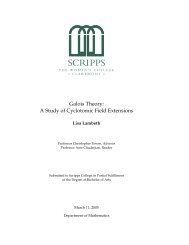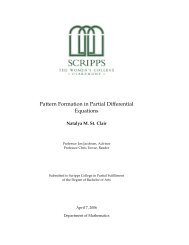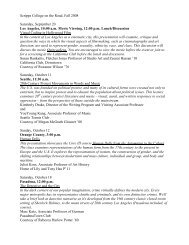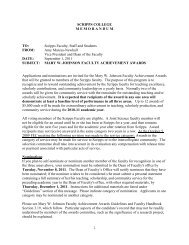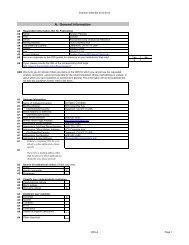Sophie Germain: mathématicienne extraordinaire - Scripps College
Sophie Germain: mathématicienne extraordinaire - Scripps College
Sophie Germain: mathématicienne extraordinaire - Scripps College
You also want an ePaper? Increase the reach of your titles
YUMPU automatically turns print PDFs into web optimized ePapers that Google loves.
The First Attempts 35<br />
4.1.2. Without loss of generality, we assume x 0 is even and we write<br />
x 2 0 = 2st, (4.1)<br />
y 2 0 = s 2 − t 2 , (4.2)<br />
z 2 0 = s 2 + t 2 , (4.3)<br />
with s and t relatively prime and of opposite parity, and with s > t > 0.<br />
Equation (4.2) gives us y0 2 + t2 = s 2 , another Pythagorean triple with<br />
integer solutions that can be similarly decomposed. We know that either y 0<br />
or t must be even. Suppose that y 0 is even. Then x 0 and y 0 are both even so<br />
they are not relatively prime. This is a contradiction, so y 0 cannot be even.<br />
So there must be integers a and b such that<br />
t = 2ab<br />
y 0 = a 2 − b 2<br />
s = a 2 + b 2<br />
where a and b are relatively prime and of opposite parity, and with a > b > 0.<br />
Then equation (4.1) can be rewritten as x 2 0 = 4ab(a2 + b 2 ).<br />
Lemma 1. Relatively prime divisors of square are themselves squares. In fact,<br />
relatively prime divisors of an nth power are themselves nth powers.<br />
For a proof of this lemma some particularly good exercises can be found<br />
in [5] or [22]. This proof uses the Fundamental Theorem of Arithmetic, that<br />
every integer greater than 1 has a unique prime factorization. We will deal











